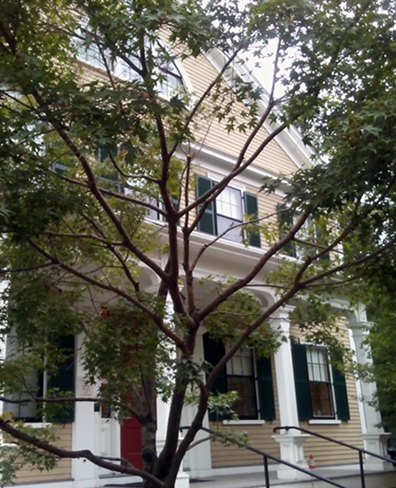The Laboratory for Particle Physics and Cosmology (LPPC) at Harvard University conducts cutting edge research in experimental particle physics and observational cosmology, and provides education for graduate and undergraduate students.
The LPPC Building
LPPC is spread across buildings in the Northwest Campus. Our main office building is Palfrey House, originally built by John Palfrey. To find Palfrey on the Harvard campus, view this Harvard Map.
Palfrey House
Faculty
The LPPC is led by five faculty members from Harvard Physics and Astronomy Departments: Profs. Carlos Argüelles, Melissa Franklin, John Huth, Masahiro Morii, and Chris Stubbs.
Astroparticle Physics Frontier
The Astroparticle Physics Frontier Group is led by Carlos Argüelles, a neutrino physicist. His work explores properties of neutrinos using data from the IceCube Neutrino Observatory. IceCube data provides a unique window on the highest energy neutrinos ever observed. It is an ideal place to search for new Beyond Standard Model effects.
Energy Frontier
The Energy Frontier Group, led by Profs. Franklin, Huth, and Morii, studies the highest-energy proton-proton collisions with the ATLAS Experiment at the Large Hadron Collider (LHC). We measure the properties of the Higgs boson, and searches for new physics beyond the Standard Model. We also have a dedicated website for the ATLAS group.
Cosmic Frontier
The Cosmic Frontier Group, led by Prof. Stubbs, is primarily working on the development of the Vera C. Rubin Observatory (formerly the LSST) as a tool for studying the accelerating expansion of the Universe. Our group plays a central role in the calibration system, in optimizing implementation of the Legacy Survey of Space and Time (LSST) survey strategy, and in commissioning and exploitation of the full Rubin system. Working in partnership with DOE laboratories (SLAC and BNL), we are also engaged in the construction of the 3.5 Gpixel Rubin Observatory LSST camera system.
